Here’s a climate change impact you probably never considered: bison diets.
As the climate warms, bison in North America are likely to shrink, as documented in research published by Joseph Craine and colleagues.
The reason they shrink is because as grasslands warm, grasses and other plants accumulate less protein. Bison are then forced to eat plants that are less nutritious.
This raises a related question: what plants to bison actually eat?
The answer to this question could help conservationists manage for plant species that are higher in protein and preferred by bison – ensuring healthy herds on warming grasslands.
The Bison Story in Context
The near-loss of our bison herds is one of our most-told conservation stories. The great herds were reduced to near extinction, the survivors rescued with no time to spare. Bison have recovered – a remarkable success – but the animals are now scattered in much smaller herds on national parks, nature preserves and ranches.
Not only are there fewer bison roaming the Great Plains, they no longer migrate. Two or three major bison migrations once occurred on North America’s grasslands, on a scale that is difficult to comprehend today.
“Everyone thinks of the Serengeti as the home to a major migration, but it would have been dwarfed by the migration of bison on the Great Plains,” says Craine. “The scale of the plains is huge. Millions of bison would have traveled 1000 miles every year. They moved based on the nutritional quality of plants.”
Today, with most bison in fenced reserves, such movements are not possible. Bison need to meet their nutritional needs within the bounds of that reserve. If grasses with lower protein dominate, the bison have nowhere to move.
But how do bison diets shift in a warming climate? To answer this question, Craine researched actual bison diets in two herds on grasslands that differ in mean annual temperature by 6 degrees Celsius: the Samuel H. Ordway Jr. Memorial Preserve in South Dakota and the warmer Konza Prairie Biological Station in Kansas.
A mature bison in South Dakota averaged 500 pounds larger than one in Kansas. But researchers had a poor understanding of exactly what bison were eating in each place.
What he found, using sophisticated DNA analysis of fecal samples, contained some major surprises about what bison ate – including disproving the long-held belief that bison are strictly grazers.
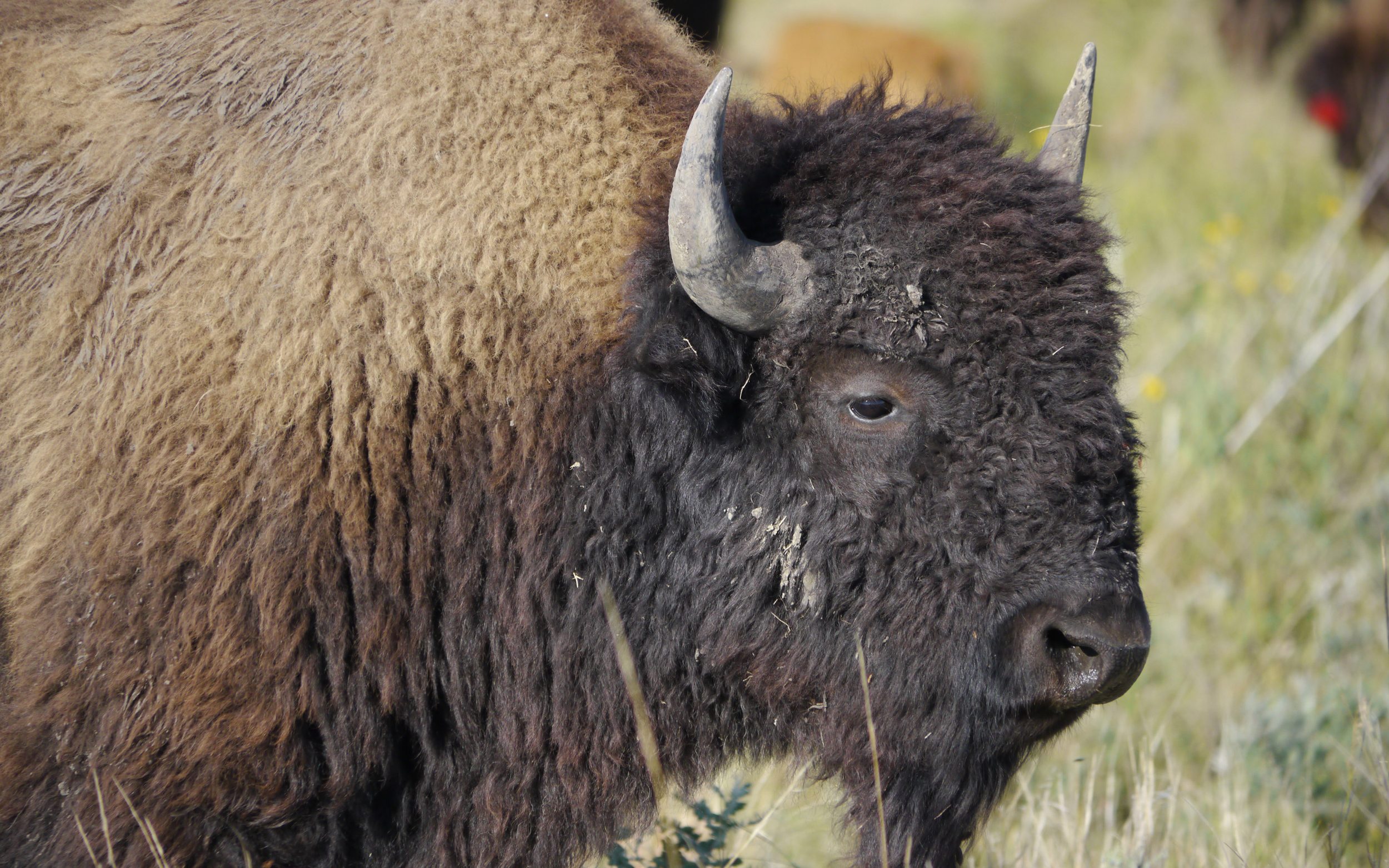
Follow that Pooping Bison
To analyze bison diets, researchers first needed fecal samples. Mary Miller, the Conservancy’s Northcentral South Dakota conservation manager, led collection on the Ordway Prairie. Finding a specific bison “patty” on the prairie seemed like a straightforward task but at times could feel like a wild goose chase.
Miller and her team were tasked with collecting fecal samples from mature cows and mature bulls. “Finding bison can be a lot harder than you think it should be,” she says. “This was complicated by the fact that you actually had to see a specific animal defecate. You had to make sure you had an animal in the right age range and then observe it for signs that it was getting ready to go.”
Miller has a lot of experience observing bison, so she could usually pinpoint an animal. But the fact that they are usually roaming in herds could complicate the search.
“Sometimes you’re approaching a herd, and all of a sudden they all stand up and poop right before you get there,” she says. “You know it’s going to be a while before they defecate again, so you’re going to be watching one bison for a long time.”
The fecal samples are then analyzed for the DNA from bits of undigested plant material, allowing for a rapid assessment of all the plant species consumed by the animal. “It’s using CSI techniques for conservation,” says Craine. “It’s a powerful way to determine what bison actually eat, which it turns out is quite different from what we thought they were eating.”
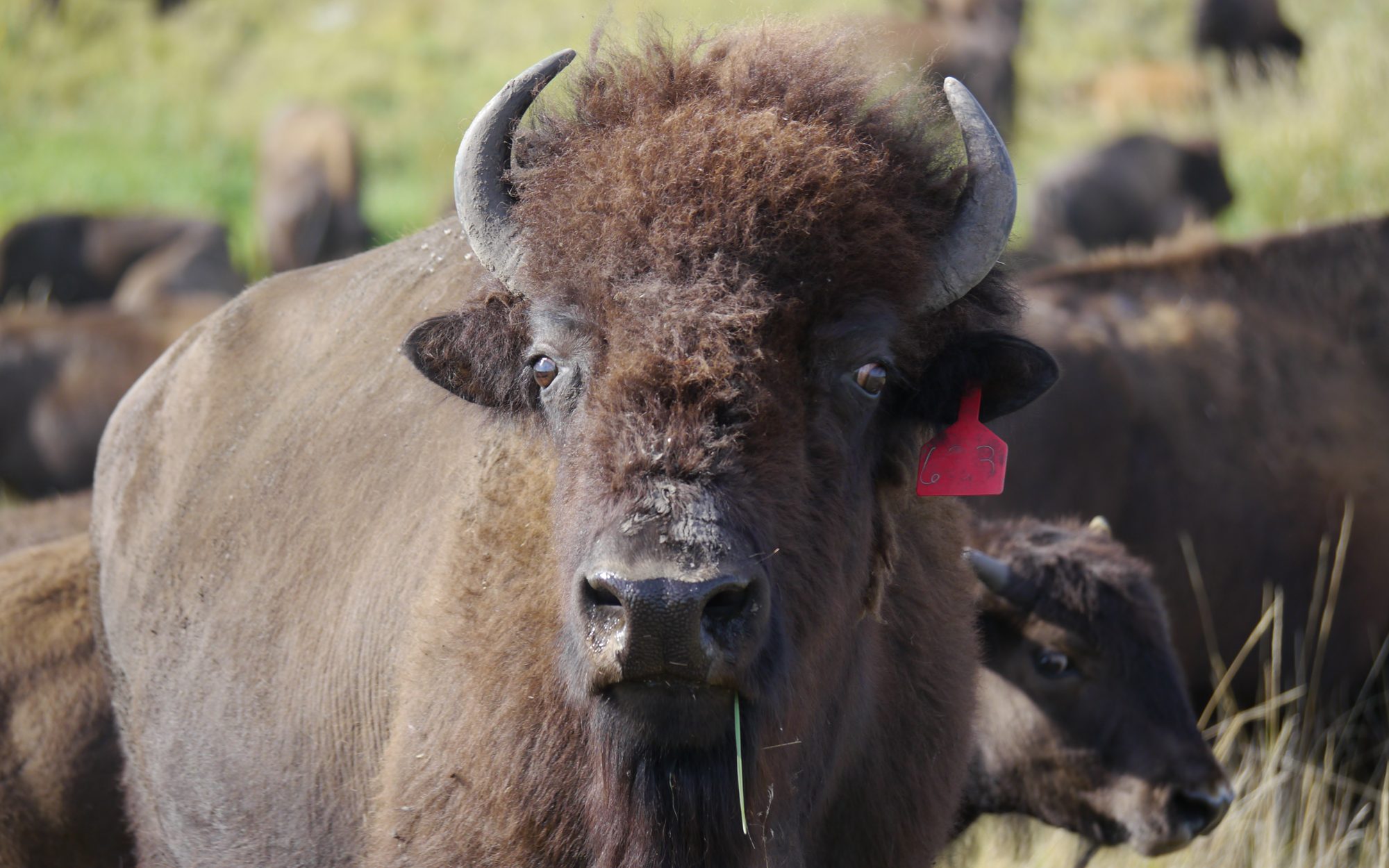
Grazers and Browsers
Bison are supposed to be strictly grazers: herbivores that focus exclusively on grasses. At least that is what biologists have long thought, and verified by extensive field observations.
The DNA evidence, though, casts serious doubt on this idea. In fact, the bison in Craine’s study ate a far greater variety of plants than anyone had realized, including shrubs – what ecologists know as browse.
“There are 400 to 500 plant species in a typical healthy grassland,” says Craine. “And bison rely on a lot of them. They have a very diverse diet, relying on a lot of plants other than grasses.”
This was especially true in the warmer grasslands of Kansas, where grasses were lower in protein. Here bison relied a lot more on shrubs and forbs for protein. The paper by lead author Craine suggested that as the climate warms, bison may shift more to browsing than grazing.
What does this mean for managers?
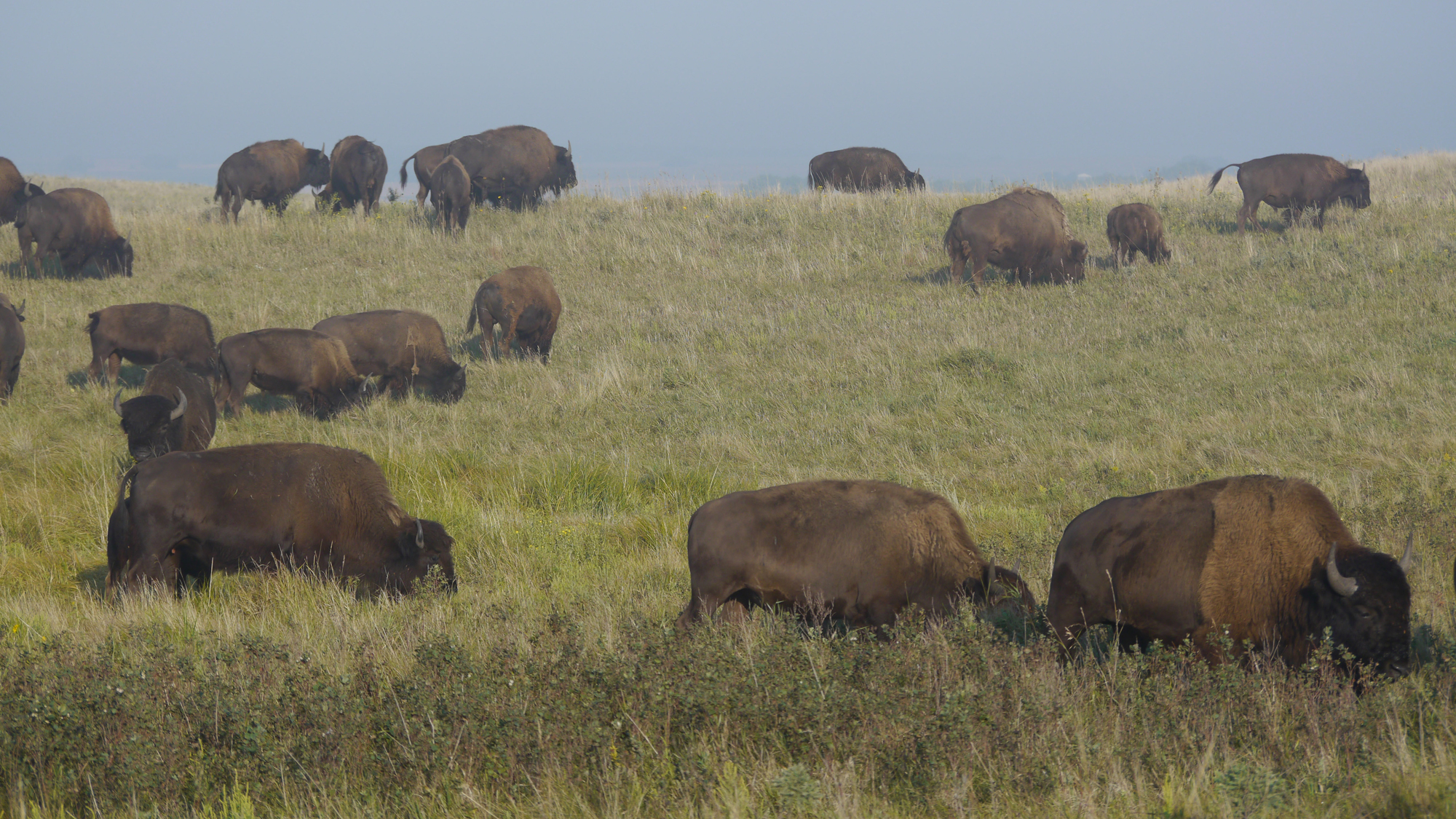
Traditionally, bison management has been all about the grass. Bison management has essentially been grass management.
“When thinking about herd health, managers have to promote plant diversity, not just grass,” says Craine. “If managers worked to promote grasses at the expense of nutritious forbs and shrubs, bison would suffer. Knowing what species bison rely on gives us the opportunity to promote and manage for those species that would help bison the most.”
For instance, Ceanothus – a nitrogen fixing shrub commonly known as Jersey tea – has never been considered important in bison management. Craine’s research, though, found this shrub to be an important source of protein for bison.
Of course, small preserves can complicate the picture. “We don’t know if bison eat certain plants because they’re nutritious or if they eat them because they’re there,” says the Conservancy’s Mary Miller.
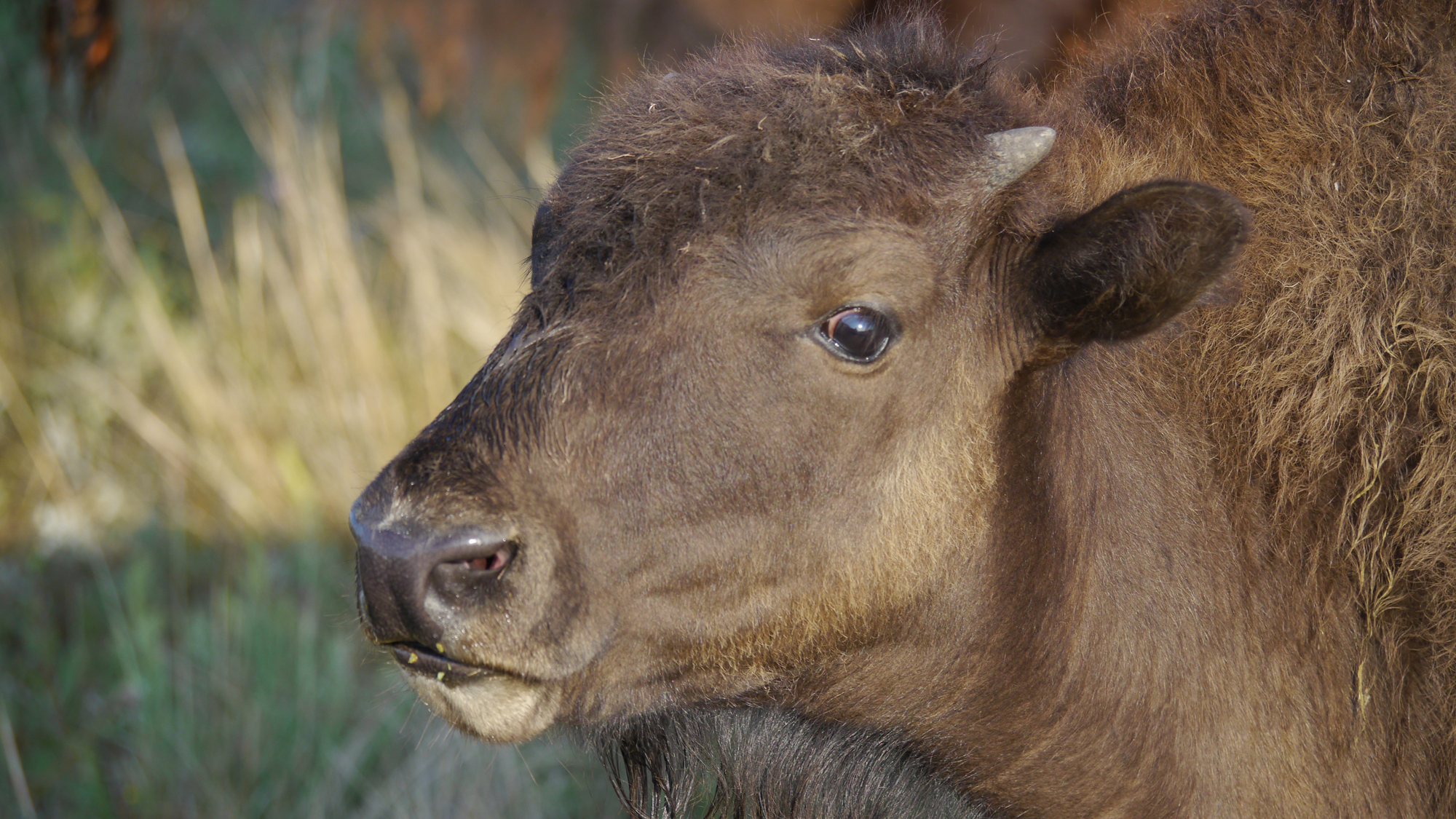
The DNA analysis will allow for a more accurate picture, and help bison conservationists adapt management strategies to a warming climate.
“We can’t make up for the fact that they can’t migrate to areas with more nutritious plants,” says Craine. “We know that as grasslands warm, the grasses become lower in protein. With these two facts, we could be looking at bison with lower growth rates and lower birth rates. But we could also compensate in our management, focusing on plant species that are higher in protein that bison will eat.
“Unfortunately, we are running out of time,” he continues. “we need to collect a lot more poop from a lot more bison if we are going to have a broad enough understanding of bison diet to stave off some of the effects of warming. We not only want to keep bison on the prairie, but also massive bison – the kind that make the earth shake when they run by.”
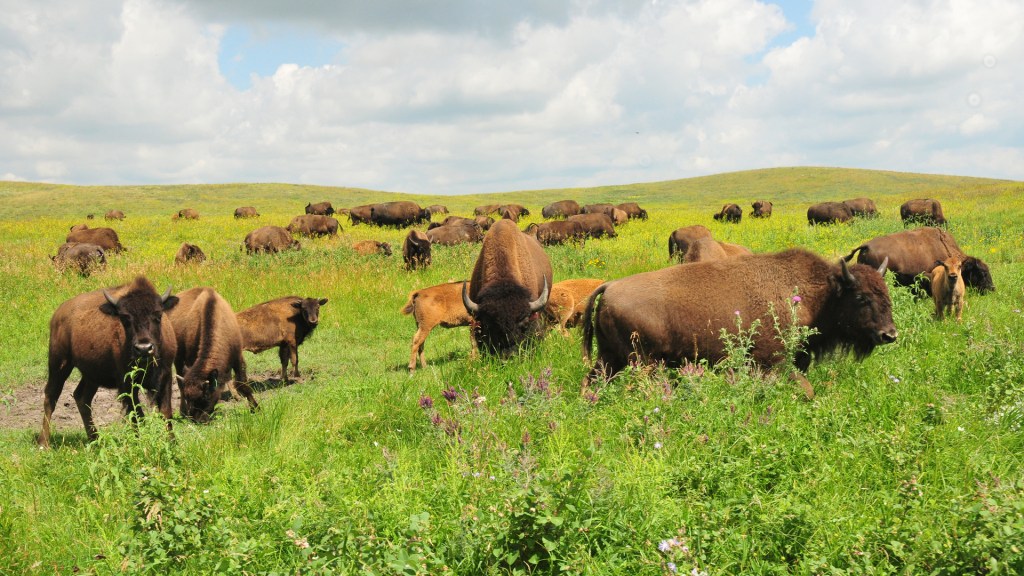



I for one think the animal knows what to eat. Why must people inter fear with this wonderful animal. They are not pets you feed as you like. The world and all of us creatures are changing to fit our climate and resorses. If you want to spend your money on something, help the homeless.
Get clean water to people who have lead in the water, or no water at all. I think you get the jest of what I’m saying. Thank you for wonderful photos.
Dear Matt, Just wanted to say Many Blessings & Thanks!!! For All of the ‘poopy’ Important Research that You are doing!! Buffalo’s are/in my opinion /one of God’s Most Beautiful animals He created!!! Stay safe & warm. Again, Blessings from north New Mexico mtns.!! Sincerely, Jeanie Phillips
Very interesting article, and further proof of how climate change is affecting the world around us in so many ways. While Republicans seem to be the only ones in the world who don’t believe in what is happening, the rest of the world is beginning to get the message, and will hopefully put in place the necessary steps to protect our planet and future generations of humans, animals and plants alike.
Thanks so much to Matt Miller, Joseph Craine, Mary Miller, and all the researchers who are bringing this data to light. I’m a former staff member, donor, Legacy Club member, and long-time fan of TNC’s work, and believe in this science-driven approach to conservation. I’m also an artist who loves bison! Here’s a link to one of my paintings that brings attention to the importance of grasslands. If you click on the image and look closely in the lower left corner, you can see the image of a bison within the grasses.
http://www.studiodune.com/art/relationships_of_the_west
Thanks for all you do, TNC!
The government needs to stop harassing, capturing, & slaughtering the buffalo. Let them roam to find better grass.
Fascinating!
Birds spread their food preferences with seeds in ready-made fertilizer. For instance, berries are popular among birds, and plants with berries are found growing where birds poop. I wonder, do bison also spread their food preferences?
Great question.
If you take a close look at bison poop, it’s full of seeds. And many of these do germinate later.
Bison hair is also a tangle of seeds.
Thank goodness someone is concerned about the Buffalo!! They are so magestic & you can not help but want to just hug one. They so resemble cattle. Trying to keep them in grasses & shrubs that will be healthy for them is awesome. I am happy there are folks who really care about these beautiful creatures.
then there is the possibility that larger animals are more efficient conserving heat. No need to be bigger?
Giantism is a little understood phenomenon in any species. The link between high protein intake and gross body size is certainly demonstrated in humans, and possibly in dogs. Since cats have an almost all protein diet, there may not be as much correlation.
Question: Do we want massive bison, or massive numbers of bison? Your research may have to develop an optimum number of bison per acre (or per concentration of specific crops) for any particular body mass index.
Is the aesthetic preference of your researchers for massive bison shared by the Native American tribes who are custodians of bison on their reservations? Is it shared by the general public who will fund the non-reservation bison preserves? Is there a market for locavore cultivation of a few bison for specialty restaurants? What size animal would they prefer to raise and take to the local slaughterhouse? And I am sure that a few minutes of free-range thinking would raise a lot more questions.
This is great research and I look forward to seeing more of your results over the next 10 years. As I am 80, I probably will not see much more than that.
All great questions, Teddy.
Agronomists have spent a lot of time working on understanding nutritional constraints on growth. Bison and cattle are closely enough related that the basics of nutrition can be used to understand bison growth. There, we see that (up to a point), having a higher protein diet leads to greater weight gain.
Bison are still different than cattle, though. For example, their metabolism drops in the winter. You can feed them all you want, they just aren’t going to be putting on weight like cattle do.
Big animals make for tough meat, regardless. But that’s not a good reason for not helping the bison.
We’ll try to get more research out on the animals. We might be slow to write papers, but that shouldn’t stop anyone from going out and appreciating the animals. They are amazing regardless.
Thanks Matt for this article. I am a rancher on Central Montana running our livestock primarily on native cover. We have been working with professional botanists to develop a taxonomy for plants on our 14000 acres forage base. We felt pretty proud-maybe less so now-that we had identified up to 300 species, including the expected invasive plants that have naturalized in the area. Dr. Craine’s reference to 400 to 500 plant species being readily available for bison grazers, seemed a bit of a stretch, at least for our part of the world. We also have noticed that cattle that move frequently, are also very fond of a variety of forbs and small shrubs. Also, I think it has been documented with other foraging wildlife, like deer and elk, tend to be larger the farther north they occur. I would appreciate your thoughts on the observations, I have shared.
Thanks, Bill Milton
Thanks for the work you are doing, Bill. People getting to know their own backyard is the most important step.
400-500 species is the number we use for southern prairies. it seems perfectly reasonable that central MT would only have 300 or so. That’s still a lot!
We’ve started working with Texas A&M to look at cattle diet across the Great Plains. First paper on that should be coming out soon.
Livestock ranchers want all the buffalo gone. They want the land for them self. They will start a government sanctioned slaughter of these beautiful animals. After the Bald Eagle I feel the Buffalo is our 2nd US emblem. This should not be allowed to go forward.
Very good research and a worthy project. Do you have volunteers willing to assist in the collection and monitoring (watching) the animals as they eat and poop? If so, could I volunteer to assist here in California? I am retired and have the time available to assist in this worthy project.
A warming climate is certainly a factor in the bison’s environment and required nutrients. However, it should also be taken into consideration that most bison today are not genetically pure as were the bison who roamed the plains in the 1800’s. It is fact that today’s bison have DNA that is mixed with cattle DNA, thus having had an effect on both their size and robustness.
We certainly do not know much about what effect the cattle DNA in bison is having on the animals, but only a very small proportion of the DNA in modern bison come from cattle. Most bison do not have cattle mitochondrial DNA as they have been selective culled out of herds. The amount of nuclear DNA has to be very low–likely just a few percent. This is because the first male hybrids between bison and cattle were sterile. In order to get a viable male hybrid, required a lot of backcrossing with bison. As such, many modern bison likely have some cattle nuclear DNA, but it’s not that much.
Still, a good point for future research. It would be fascinating to know what cattle genes might be in some animals and if it affects their ecology at all.
The study by Derr at Texas A&M did show that bison with cattle genes tended to be smaller. How does the weight of the bison in this study compare with the Blue Mounds herd in Minnesota?
Thanks for the question, Deanne.
We do not have any weight data from Blue Mounds, so I just don’t know. When I was doing my synthesis awhile back, I seem to remember, they didn’t have a scale.
The question of whether cattle mitochondria affect weight gain in bison is still open for debate.
The one study that examined the effects of cattle mitochondrial DNA on bison performance shows little impact. Derr et al. (2012) examined weight gain and heights of bison from Catalina Island for animals with cattle mitochondria and those without. For animals on Catalina Island, weights were 16 lbs (2%) less for animals with cattle mtDNA. This 16 lbs difference in weight was generally present in calves and then maintained with age, meaning that weight gain was not different among animals with and without cattle mtDNA. This is a bit strange because you’d expect the differences to become greater over time.
In that study, for animals in a feedlot setting, weights of calves with cattle mtDNA were less than those bison mtDNA, but there were no differences in weight gain for the two categories. Heights averaged just 2 cm shorter for cattle mtDNA bison. That’s really not much.
In all, I’d say that there is insufficient research to know of the presence of cattle mitochondria would affect weight gain.
Derr, J. N., P. W. Hedrick, N. D. Halbert, L. Plough, L. K. Dobson, J. King, C. Duncan, D. L. Hunter, N. D. Cohen, and D. Hedgecock. 2012. Phenotypic Effects of Cattle Mitochondrial DNA in American Bison. Conservation Biology 26:1130-1136.
I have read that the larger a mammal is, the more able it is to tolerate very cold weather. If our climate is warming (of course it is), perhaps the bison do not need to be as large. Could that also affect their current size???
Great question. An old observation is that animals in the north are larger than those in the south in the Northern Hemisphere. Larger body size does confer benefits in a colder climate, but that is unlikely to be causing the N-S variation in body size that we see. We suspect this is true because when bison get transplanted from southern to northern grasslands in the spring they accumulate mass faster in the north than south. This happens before it turns cold, so winter severity is unlikely to be driving this. There is also little benefit to animals in the south not to put on weight and grow as large as they can (especially when males have to compete for females).
The most parsimonious explanation is that the higher protein concentrations of plants in the north promotes animals to grow larger than in the south.